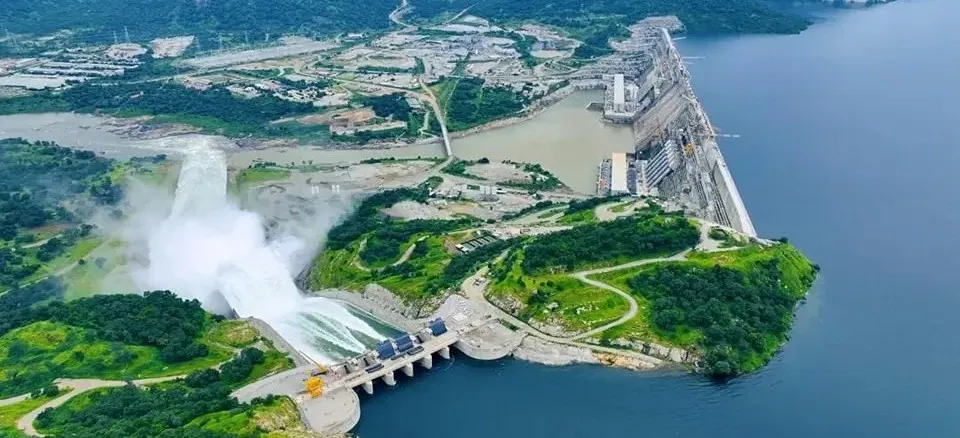Ethiopia is preparing to officially commission the Grand Ethiopian Renaissance Dam (GERD), with authorities signaling that the long-awaited inauguration is now imminent after the project’s final pre-commissioning milestones were achieved. State utility Ethiopian Electric Power (EEP) has reported record generation and sales as the 5.15-gigawatt hydropower complex ramps up, and a widely anticipated commissioning ceremony is expected in the coming months, capping more than a decade of construction on Africa’s largest power plant.
Prime Minister Abiy Ahmed announced that the sixth and final pre-commissioning filling has been completed, clearing the path for full commercial operation. The government has tentatively planned an inauguration around September 2025, aligning with the technical handover and planned celebrations. Officials have also extended invitations to neighboring countries, including Egypt and Sudan, in a bid to project the dam as a regional asset rather than a point of contention.
What’s changed on the ground
The build is essentially complete. Government updates place physical completion at about 98.66%, with six generating units already producing power while remaining systems are finalized. GERD has been supplying electricity since 2022, but the latest stage signals the shift from phased testing to near-full operation.
Once fully online, GERD will be the largest hydropower plant ever commissioned in Africa. At a design capacity of about 5.15 GW, the dam will double Ethiopia’s available generation capacity, potentially creating a reliable surplus for export when water conditions are favorable.
Why the commissioning matters
- Domestic power security
Ethiopia’s electricity demand has outpaced supply for years, leading to rolling blackouts and reliance on costly diesel back-up generators. The GERD is expected to reduce load-shedding, stabilize supply, and underpin industrial growth. It will also help expand household electrification, still low in rural areas, by powering grid extensions and possibly mini-grid systems. - Regional trade
With full operation, Ethiopia will be positioned to export more electricity to neighbors through the Eastern Africa Power Pool. Existing interconnectors to countries like Kenya and planned links to others could turn power exports into a significant source of foreign exchange. - Grid flexibility and water management
GERD is designed not only for high power output but also for operational flexibility. By regulating seasonal flows, the dam can help moderate floods, store water during wet seasons, and release it gradually during drier periods. This could benefit downstream hydropower plants and irrigation systems, provided coordination agreements are in place.
Also read: How Large-Scale Solar Plus Storage is Transforming Uganda’s Energy Future
The political backdrop
The commissioning comes against a backdrop of unresolved Nile water disputes. Egypt and Sudan have voiced objections to Ethiopia’s unilateral reservoir fillings and insist on a legally binding agreement governing operations, especially in drought conditions. Ethiopia maintains that the GERD will not harm downstream users and argues that it is a sovereign right to develop its water resources.
Inviting Egypt and Sudan to the commissioning ceremony is a symbolic move toward cooperation, but substantive negotiations remain unresolved. The political narrative around GERD is still deeply intertwined with national pride, regional diplomacy, and questions of transboundary resource management.
How we got here
Construction of GERD began in 2011 and was largely self-financed through domestic bonds and public contributions after international lenders stayed away. The dam first generated electricity in 2022, then advanced through phased turbine commissioning alongside successive reservoir fillings.
The sixth filling in 2025 was the final technical step before full operation. Engineers have completed key civil works, installed transmission infrastructure, and integrated turbines into the national grid, positioning GERD to become the core of Ethiopia’s energy system for decades.
Also read:Morocco Launches $6.18 Million Hybrid Solar-Diesel Power Project in El Guerguarat
Key developments to monitor
- Grid integration and output
The first months after commissioning will reveal how effectively GERD integrates with Ethiopia’s grid. Key metrics will be generation volumes, turbine availability, and reservoir management, particularly during seasonal fluctuations in Nile inflow. - Power exports
Full commissioning could significantly increase Ethiopia’s electricity exports. The impact on revenue will depend on power-purchase agreements, interconnector reliability, and regional demand. - Diplomatic developments
Commissioning may trigger renewed negotiations on Nile water sharing. If Ethiopia can pair technical success with diplomatic engagement, it could reduce regional tensions. Conversely, failure to address downstream concerns could deepen mistrust. - Water management outcomes
Hydrological data from GERD’s early years of full operation will shape the debate over its environmental and agricultural impacts. Positive outcomes could foster cooperation; negative ones could inflame disputes.















